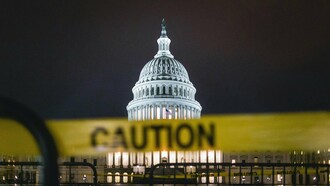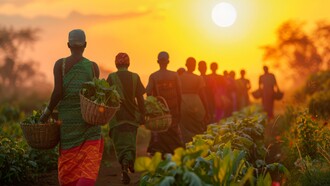In the middle-to-late twentieth century, the concept of development received heightened attention in the apex international multilateral dialogues. To help frame the engagements on development, at its Fifty-First Session held on 15 October 1997, the United Nations General Assembly (UNGA), a platform for the highest-ranking political leaders and representatives, dedicated a session to discuss and formulate a common understanding, thus an agenda at a global level, on the concept of development. The specific UNGA Agenda Item was referred to as the Agenda for Development. However, though the dialogue was held at the international level, issues discussed and covered in the outcome document place a high premium on the importance of domestic contexts and solutions as mechanisms and sine qua non for sustainable development.
It is important to contextualise the discussion in this article by providing a broad description of what development is about, as explained in UNGA51 Resolution A/RES/51/240. In this globally accepted text, development encompasses the following: political, economic, social, and environmental aspects. This characterisation makes development a multidimensional endeavour to achieve a “higher quality of life.”1 The multidimensional nature of development naturally underpins its understanding and operationalisation through strategies, policies, regulations, laws, agreements, directives, and programmes as well as projects that are undertaken under its ambit.
With the passage of time into the twenty-first century, the United Nations took a more advanced step in entrenching a deeper and broader understanding of development. This was evinced by the adoption of the eight Millennium Development Goals (MDGs) in the year 2000. The eight MDGs covered what were believed to be key aspects of development, namely eradication of extreme poverty and hunger; achievement of universal roll-out of primary education; promotion of gender equality and empowerment of women; reduction of child mortality; improvement of maternal health; combating of malaria, HIV/AIDS and other diseases; environmental sustainability; and forging of global partnerships for development. There is no gain in stating that these were noble and realistic goals to be prioritised for development.
In the close-out report released in 2015, the United Nations stated, among other things, that the implementation of the MDGs through global partnerships facilitated progress in areas such as lifting one billion people out of extreme poverty, improved access and enrolment of children in primary education centres, improved representation of women in leadership structures such as parliament, reduced child mortality, etc. Fundamentally, the official development assistance from developed to developing countries increased by 66% between 2000 and 2014, reaching US $135.2 billion.2 Linked to this latter trend was an improvement in the proportion of external debt service to export revenue in developing countries, which declined from 12% to 3% by 2013.2
Notwithstanding the achievements associated with the implementation of the MDGs, developmental challenges still persist, and these include issues such as informality as manifested by the informal economy, trade disparities, informal settlements and slums, etc., in many parts of the world.
When the deadline for MDGs approached and passed in 2015, the United Nations adopted the Sustainable Development Goals (SDGs) to take the agenda forward. Expanding the development agenda focus areas, the SDGs have seventeen goals which address various aspects of development, and most of them were drawn from the MDGs. The SDG agenda is a twenty-year global programme for development covering the period 2015-2030. As was the case with the MDGs, the SDGs also make provisions for global partnerships for development. Critical to comprehend is that the global partnerships promoted in SDG17 are meant to support, facilitate, and enable local efforts toward the attainment of development targets by 2030.
It was twenty-eight years ago that the United Nations recognised in its Resolution A/RES/51/240 that “by virtue of the principle of equal rights and self-determination of peoples enshrined in the Charter of the United Nations, all peoples have the right freely to determine, without external interference, their political status and to pursue their economic, social, and cultural development, and every State has the duty to respect this right in accordance with the provisions of the Charter.”1 In other words, the promotion of global partnerships for development never usurps the rights of states to make every effort possible to realise the development goals, nor do they permit others to impose their will on them or dictate their political, economic, social, and cultural priorities, preferences, and systems. Conversely, the global partnerships for development were and still are meant to augment a state’s efforts in pursuit of its determined national development priorities in alignment with the globally endorsed goals.
2025 marks ten years since the adoption of the Sustainable Development Goals in September 2015. In May of this year, the United Nations Secretary-General released the Sustainable Development Goals Progress Report 2025. This marked the tenth edition of the report. The report highlights, inter alia, that 35 per cent of SDG targets are on track or making moderate progress; almost half are progressing too slowly; concerning, though, is the fact that 18 per cent are in reverse. However, millions of people have managed to gain increased access to essential services since 2015. Critical to note is that over 800 million people are trapped in extreme poverty and hunger. The latter point was also made in the MDGs close-out report ten years ago. Challenges in dealing with and addressing the development goals are not only restricted to poverty issues but also encompass other critical issues such as financing complexities both at national and international levels, corruption and mismanagement of public financial resources at the local level, poor governance and lack of credible leadership at the different structures and spheres of government at the national and subnational levels, multidimensional aspects of poverty, and political and environmental instability and threats.
The release of the 2025 ten-year review report on the implementation of the SDGs highlighted a number of challenges that have hindered progress toward their attainment. Some of the key issues underscored include rising debt-servicing costs for low- and middle-income countries amounting to US$1.4 trillion in 2023, an investment gap to the tune of US$4 trillion and a decline in Official Development Assistance (ODA), which declined by 7.1% following years of marked growth. Analysts and observers have argued that the decline in ODA continues to compound the challenges associated with the implementation of the development goals, as many developing countries rely heavily on this source of funding for their national government programmes. However, notwithstanding other important contributing factors to the challenges, such as climate change, natural disasters, etc., at least from 1996 to 2025 (twenty-nine years), developing countries ought to have by now developed more local capacity to finance their own development.
The reality is that this is not the case, as stated in the 2025 SDG report. The latter states that “the share of developing countries in global merchandise exports has remained stagnant since 2015, with Least-Developed Countries accounting for just 1.1 per cent, far below the SDG target to double their share by 2020.”3 Put plainly, developing countries are not doing enough to uplift their communities out of the scourge of dehumanising poverty and widening inequality.
The effects of the COVID-19 pandemic are still felt and prevalent in many parts of the world, and this has affected economic systems and structures in varied ways. Protracted conflicts and tensions between some countries are another factor that has contributed to the decline of global partnerships for development. National and geopolitical interests of some states have also hindered, negatively impacted, and disrupted global partnerships for development. One thing is certain, though: these phenomena are not going to subside anytime soon; instead, countries are forced to re-evaluate, reflect, and reposition themselves in the global political and economic dynamics. In other words, not just alternative but also new and innovative local or domestic approaches to development have to be crafted with less focus or reduced reliance on global partnerships that are anchored on Official Development Assistance, grants, or loans. A radical paradigm shift is required to promote and enable innovation of local solutions to development in its broadest sense in accordance with the UN definition of 1996 as an endeavour to achieve a higher quality of life in relation to political, economic, social, and environmental aspects of society.
In the recent Fourth International Conference on Financing for Development held in Seville, Spain, from 30 June to 3 July 2025, it became very clear that countries have to focus on fixing local problems and addressing domestic challenges that contain and derail their development. High-level speakers shared a common message that mobilisation of domestic public resources and forging partnerships with the domestic private sector could help unlock the much-needed resources for development. Funding implementation of public policy programmes should no longer be considered the responsibility of the government alone, or other stakeholders should not continue being treated as competitors or beneficiaries of government tenders only, but as organic stakeholders with shared interest in the development of the countries and environments they operate in.
Even more critical in the Sevilla discourses was the emphasis placed on the need to bridge the trust deficit between the private and public sources of funding for development. Various policy options and enabling regulations ought to be developed to cultivate private interest to invest in various sectors of society with a clear and intentional focus on agreed national priorities. Furthermore, harmonisation of development funding mechanisms and models is key to advancing the development agenda. More attention has to be given to the intensification and restructuring of inter-institutional coordination and collaboration, bringing all stakeholders together through an all-of-society approach. Governments alone cannot deliver on the targets of development goals and solely lead nations to a better and brighter future, leaving no one and no place behind.
The relationship between the government and the private sector has to be redefined and reconfigured to move beyond the former focusing on creating and enabling an environment for investment for the latter to one where these parties consider each other as natural stakeholders bound together by a common and shared vision of sustainable development. However, to achieve this, a paradigm shift is required from both sides and through the participation of civil society, a better balance could be reached in balancing each other’s competing and shared interests. A daunting challenge, though, is the unification of fragmented civil society organisations and their inherent rivalry and competition for the limited resources and influence in society and decision-making structures. Certain though, is the fact that life cannot continue as usual, and relations between the government and other stakeholders have to be regenerated and re-engineered.
Notes
1 Resolution adopted by General Assembly: Agenda for Development.
2 The Millennium Development Goals Report.
3 The Sustainable Development Goals Report 2025.















